7.1.7.1. Timing of antiretroviral therapy
WHO recommendations on the timing of ART for children and adolescents with TB were updated in 2021 (78). ART should be started as soon as possible within two weeks of initiating TB treatment, regardless of CD4 count, among adolescents and children living with HIV (except when signs and symptoms of meningitis are present). In children and adolescents living with HIV with TBM, ART should be delayed at least 4 weeks after treatment for TBM is initiated and initiated 4–8 weeks after starting TB treatment (see Box 7.3).
 Feedback
Feedback